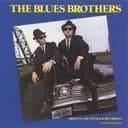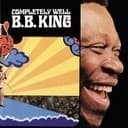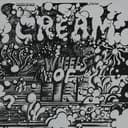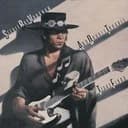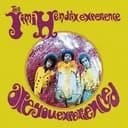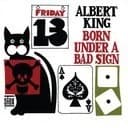The E♯ Blues Scale represents a fascinating intersection of music theory and practical performance. In Western equal temperament tuning, E♯ and F produce identical pitches, making E♯ blues and F blues sound exactly the same on piano, guitar, and most modern instruments. However, the choice between these enharmonic spellings matters significantly for musical context and readability. E♯ appears primarily in theoretical discussions or when composers work in sharp-heavy keys where F would create notational inconsistencies—for example, in B major (five sharps) or F♯ major (six sharps), using E♯ maintains the alphabetical sequence of note names. The blues scale's "blue note"—the ♭5 interval (B natural in E♯ blues)—creates a tritone relationship with the root that doesn't resolve neatly within traditional Western harmony. Blues musicians historically "bent" this note, creating microtonal inflections between the perfect 4th and 5th that evoke African musical traditions and add emotional expressiveness impossible to capture in standard notation. This pitch ambiguity became central to blues, rock, and jazz vocabulary, influencing generations of guitarists, vocalists, and instrumentalists seeking authentic blues phrasing.
Enharmonic Equivalence and Practical Use
Understanding enharmonic equivalence is crucial when working with the E♯ Blues Scale. While E♯ and F produce identical sounds on equal tempered instruments, the F Blues Scale notation (F-A♭-B♭-B-C-E♭) is overwhelmingly preferred in real-world applications for several practical reasons. First, F blues requires no double-sharps and uses familiar flat accidentals (A♭, B♭, E♭) that most musicians readily recognize. Second, blues music historically developed in keys favoring flats rather than sharps, making F blues more compatible with traditional blues repertoire. Third, when improvising over blues progressions in F, using F blues notation aligns naturally with chord symbols like F7, B♭7, and C7. The E♯ spelling, by contrast, creates unnecessary complexity: you'd need to think in terms of E♯7, A♯7, and B♯7 chords, which are rarely encountered in practical music making. For pedagogical purposes and performance contexts, always default to F blues unless you're specifically analyzing a composition written in a sharp-heavy key signature where E♯ maintains notational consistency. Mastering both spellings, however, deepens your theoretical understanding of how the same sonic material can be represented differently depending on harmonic context.
Improvisation and Application
The E♯ Blues Scale (or more practically, F blues) excels in improvisation over blues progressions, particularly the standard 12-bar blues form. Unlike scales requiring careful note selection over changing chords, the blues scale works remarkably well over all three dominant seventh chords (I7, IV7, V7) in a blues progression, making it accessible for beginning improvisers while offering depth for advanced players. When soloing, emphasize the blue note (B natural in E♯ context, B natural in F context) by approaching it from either direction and resolving to A♯ or B♯ (B♭ or C in F blues)—this creates the signature "blues lick" sound heard in countless classic recordings. Experiment with rhythmic variations, triplet figures, and call-and-response patterns to develop authentic blues phrasing. The scale functions effectively over dominant seventh chords in rock, funk, and jazz contexts. For more harmonic sophistication, combine the blues scale with the minor pentatonic or Dorian mode, switching between them to add melodic variety. Practice bending the blue note on instruments that allow pitch manipulation (guitar, harmonica, vocals, fretless bass), as this microtonal expressiveness separates authentic blues playing from merely executing correct note choices.
Comparison with Related Scales
The E♯ Blues Scale relates closely to several other scale systems, understanding which enhances musical flexibility. It differs from the E♯ Minor Pentatonic by just one note: the ♭5 interval (B natural), which transforms the pentatonic's consonant simplicity into the blues scale's characteristic edgy expressiveness. Many musicians use both scales interchangeably, treating the blue note as an optional passing tone or emphasis point. Compared to E♯ Natural Minor (theoretically E♯-F♯♯-G♯-A♯-B♯-C♯-D♯), the blues scale omits certain degrees and adds chromatic tension, creating a simplified framework focused on emotional impact rather than complete diatonic coverage. The blues scale also connects to the Mixolydian mode and dominant scales, sharing the ♭7 interval that defines dominant seventh chord quality. When practicing, start with the minor pentatonic framework and gradually introduce the blue note, listening carefully to how it adds tension and release. Understanding these relationships allows you to seamlessly move between scale systems during improvisation, choosing the right tonal palette for each musical moment.
Blues Progressions and Chord Relationships
The E♯ Blues Scale works perfectly over blues progressions built from E♯ (though in practice, you'd encounter F blues progressions far more frequently). The classic 12-bar blues progression follows the pattern: I7 (4 bars) - IV7 (2 bars) - I7 (2 bars) - V7 (1 bar) - IV7 (1 bar) - I7 (2 bars). In E♯, this would theoretically be E♯7-A♯7-E♯7-B♯7-A♯7-E♯7, though musicians would practically use F7-B♭7-F7-C7-B♭7-F7 instead. The blues scale navigates this I-IV-V movement effortlessly, as every note relates harmonically to all three dominant seventh chords. Beyond the 12-bar form, the blues scale also works over one-chord vamps, quick-change variations (IV7 in bar 2), and extended jazz-blues progressions incorporating ii-V-I turnarounds. Practice emphasizing chord tones on strong beats to create melodic lines that outline the underlying harmony. The blues scale's versatility extends beyond traditional blues into rock, funk, soul, and contemporary pop music borrowing from blues vocabulary. Understanding how the scale functions over different chord progressions transforms it from a mere collection of notes into a powerful improvisational tool for musical storytelling.
Famous Applications and Artists
While you won't find many compositions explicitly labeled "in E♯ blues" due to the practical preference for F blues notation, the sound of this scale has shaped countless legendary recordings across multiple genres. B.B. King built his entire guitar vocabulary around blues scales, using minimal notes to maximum emotional effect with signature vibrato and precise bending techniques. Eric Clapton's "Crossroads" demonstrates the blues scale's power in high-energy rock contexts, while Stevie Ray Vaughan's "Pride and Joy" showcases its application in Texas blues shuffle rhythms. Jimi Hendrix's "Red House" exemplifies blues scale mastery, combining traditional blues phrasing with psychedelic rock innovation. Jazz musicians like Miles Davis incorporated blues scales into modal jazz explorations, proving the scale transcends folk origins. In rock, guitarists from Jimmy Page to Slash have relied on blues scale patterns for memorable riffs and solos. Contemporary artists continue this tradition—John Mayer's blues-rock fusion and Gary Clark Jr.'s modern blues approach both draw heavily on blues scale vocabulary. The scale's influence extends to R&B and soul, where vocalists use blue note inflections to add emotional nuance to melodies. Understanding the blues scale connects you directly to this rich musical lineage and provides a foundation for developing authentic, expressive improvisation across multiple styles.
